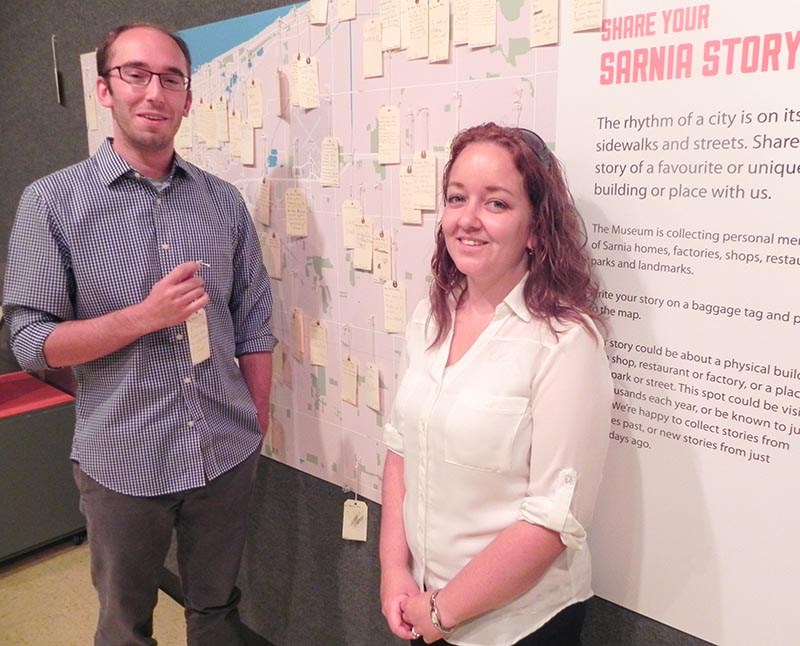Cathy Dobson
Nearly 20 brightly coloured signs are posted on buildings throughout Sarnia this summer, telling tales about places like the Colonial Hotel, the city’s first airport, Tabs Drive In and the Sarnia courthouse.
Though they’re long gone, there’s a real effort to focus on many of Sarnia’s beloved landmarks.
So what’s up with that?
Curators from the Lambton Heritage Museum hung the three-foot orange signs to mark historic sites on Sarnia’s 100th anniversary as a city.
Many are on Christina and Front streets in older parts of the city, while others are at places like Lambton Mall, which is near where the first airport was located, and Rona hardware on Colborne Road, where Tab’s Drive In was hopping in the 1950s.
The signs facilitate a walking tour of Sarnia’s history. By visiting www.lambtonmuseums.ca/sarnia100, visitors can read about each historical site and find their locations.
The tour coincides with an exhibit at the Lambton Heritage Museum focusing on the past 100 years in Sarnia, says curator Laurie Webb.
She and assistant Luke Stempien spent weeks combing through thousands of Sarnia artifacts stored at the county museum, located five minutes outside Grand Bend.
They had to decide which items to include in the exhibit “We Built This City” on display until Nov. 7.
They chose furniture, like a chest of drawers owned by Sarnia milliner Phoebe Gilbert in the 1850s inscribed with “Port Sarnia” on the back. They mounted a wooden bike on the wall made by John McCloskey, who had a Front Street bicycle shop in the early 1900s.
“(MPP) Bob Bailey loaned us that bike,” said Webb. “His mother had it in Oil Springs.”
The exhibit has many rarely seen postcards, posters, china, photographs and uniforms, such as a jail guard coat from 1960s and a wooden baton made by inmates.
“It’s been very well received with a lot of great feedback,” said Webb. “People say they are seeing things they didn’t expect and it’s bringing a lot of memories back.”
The exhibit has prompted more donations to the museum, and Sarnians are showing up with artifacts from the city they’ve kept in their homes for years.
“Our visitor numbers are up over last summer,” Webb said. “People are coming up specifically to see the exhibit.”
Sarnia’s centennial committee organized bus trips from the Strangway Centre to the museum last week. It’s not clear whether more will be scheduled.
One wall of the exhibit is covered in a map of Sarnia and visitors are encouraged to write stories about buildings they visited and experiences they had here. About 200 stories are pinned to the wall already.
“It really brings the exhibit to life,” Stempien said.
